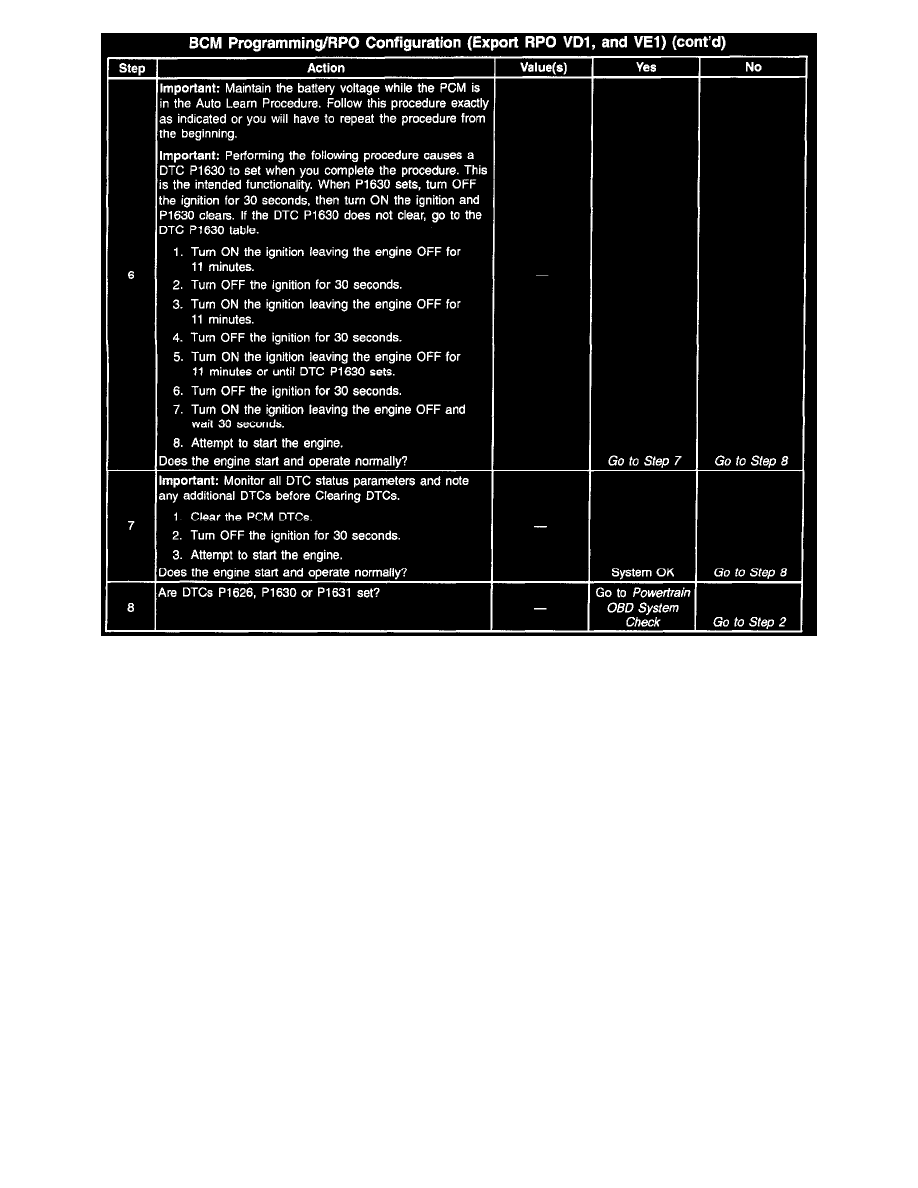Corvette V8-5.7L VIN G (1997)

BCM Programming/RPO Configuration (Export RPO VD1, And VE1) (Part 3 Of 3)
The service Body Control Module (BCM) EEPROM chip must be programmed with the proper RPO configurations. The EEPROM stores information
regarding the vehicle options and point of sale. If the BCM is not properly configured with the correct RPO codes, the BCM will set default values for
some systems, which could cause malfunctions in other systems. When the BCM is replaced, the BCM must be programed to identify the following
information:
^
Real Time Damping (RTD)
^
Memory Options
^
Daytime Running Lamps (DRL)
^
Front Fog Lamps
^
Tire Pressure Monitor (TPM)
^
HVAC (C60-Manual, CJ2-Automatic)
^
Country of Sale (US, Canada, Europe, Japan, etc.)
The BCM sends a password to the Powertrain Control Module (PCM), therefore, the PCM must also be programmed to except the new password sent
by the BCM. The BCM programming procedure will enable the learn password mode for both the BCM and PCM. This mode allows the PCM to learn
the new password sent by the BCM whenever the BCM or PCM is replaced. If the BCM and PCM is not properly programmed together, the vehicle will
exhibit a no start condition.
PASS-Key(R) Programming
When a BCM is replaced, the BCM must be programmed to accept the resistance value of the existing vehicle keys in order to allow
PASS-Key(R) operation. When the BCM is replaced, the service replacement BCM is programmed to accept the first PASS-Key(R) resistance
value detected. If the BCM is unable to detect a valid PASS-Key(R) resistance value, the BCM will never end the programming sequence and a
DTC B2735 will set. The BCM can also be programmed to accept a new PASS-Key(R) code by completing the following BCM programming
procedure.
